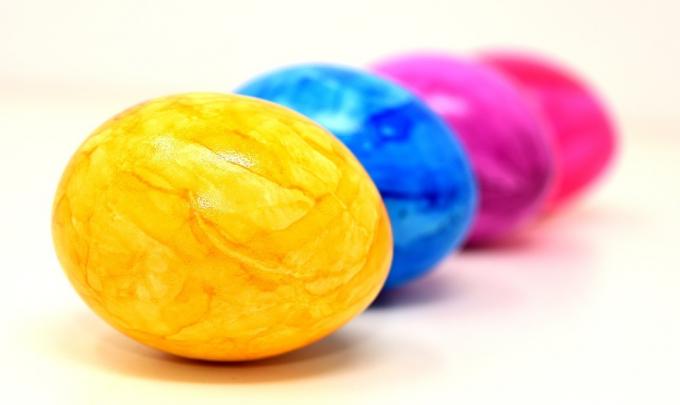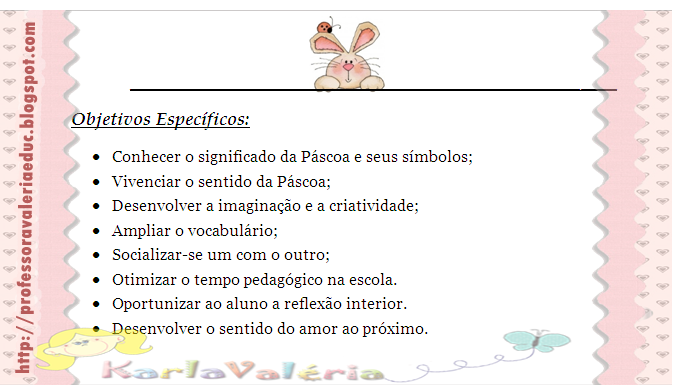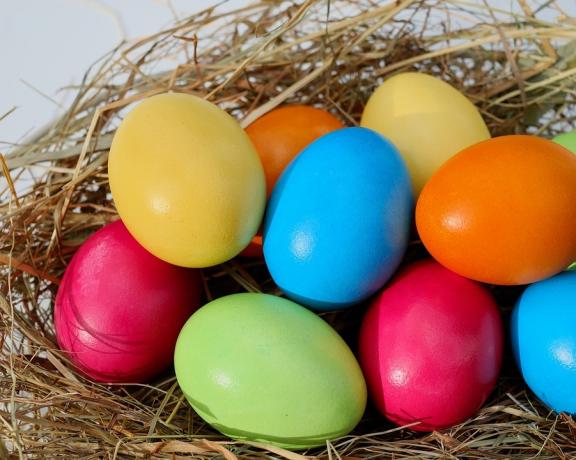Check out several suggestions and tips for your Easter at school project and work with students from Kindergarten and Elementary Education.
These templates ready for your Project Easter at school tin order to lead students to value the various existing cultural manifestations, and that must be rescued through playful and dynamic activities in order to arouse the interest of the students.
Easter is one of the most important commemorative dates among Western cultures. The origin of this celebration dates back many centuries ago. The term “Easter” has a religious origin that comes from the Latin Pascae. In Ancient Greece, this term is also found as Paska. However, its most remote origin is among the Hebrews, where the term Pesach appears, whose meaning is passage.
Historians have found information that lead to the conclusion that a passing festival had been celebrated among European peoples for thousands of years. Mainly in the Mediterranean region, some societies, including the Greek, celebrated the transition from winter to spring, during the month of March. Generally, this festival was held on the first full moon of the flower season. Among the peoples of antiquity, the end of winter and the beginning of spring were of extreme importance, as it was linked to greater chances of survival due to the harsh winter that was punishing Europe, making it difficult to produce foods.
See more at:
Index

Easter Project
This one Project Easter at school tin order to lead students to value the various existing cultural manifestations, and that must be rescued through playful and dynamic activities in order to arouse the interest of the students.
When the student comes into contact with the content in a pleasurable way, he can develop better in the teaching-learning process, or that is, it ceases to be a passive student to become a participatory, critical-reflective student raising hypotheses in relation to the object of study.
Thus, the school has a fundamental role in bringing the student to the knowledge of the main cultural manifestations existing in their environment, if related in a respectful way with them. In this way, it is up to the school institution to address this theme, providing relevant information to its students so that they can expand their knowledge.
Other tips at: Math Activities for Easter

This Easter Infant Education for Nursery Project intends, through a series of activities, to put children in contact with one of the Brazilian traditions: Easter, showing the true meaning and spiritual sense in contrast to the sense commercial.
Oral and Written Language
Working values:
More in Easter Activity Sequence for Early Childhood Education
Easter Project for Early Series
Easter is a date loved by children, who eagerly await the rabbit and chocolate eggs. So that everything has a meaning, I carry out the project of an Easter full of symbols, stories, games, art.
Culmination: face painting and the delivery of Easter party favors.
Be sure to check this out.Sequence of Activities to work on Easter

Easter is a very important religious date for us Christians, however, its symbols are filled with meanings that delight and contribute to the formation of even those who do not declare no faith. This date deserves special attention in the school calendar, with this, I develop the Easter Education Children's Project aiming to rescue values that are lost over time due to commercial appeals, because Easter is more than a simple exchange of chocolates and affection is what counts more.
Main goal: Conveying the true meaning of Easter, propagating values, good deeds and good manners, promoting reflections on friendship between people and why to share.
Easter Project for Elementary Education for 1st to 9th grade, prepared by Professor Valéria:


Easter Project for 6th to 9th grade
We justify the elaboration of the Easter Week project: The true meaning, considering that the theme deserves all respect and attention, as it is celebrated everywhere.
Thus, the school cannot be left out and has to offer its students to experience your reality.
The project aims to awaken the student to the true feeling of Easter.
Using technological resources to work the Easter theme in a different way, showing the true meaning that is spiritual and non-commercial as you can see in recent times.
The project will be developed in phases:
Resources used
interactive activities
video about the topic
Subscribe to our email list and receive interesting information and updates in your email inbox
Thanks for signing up.